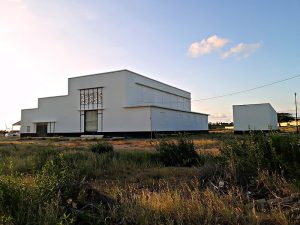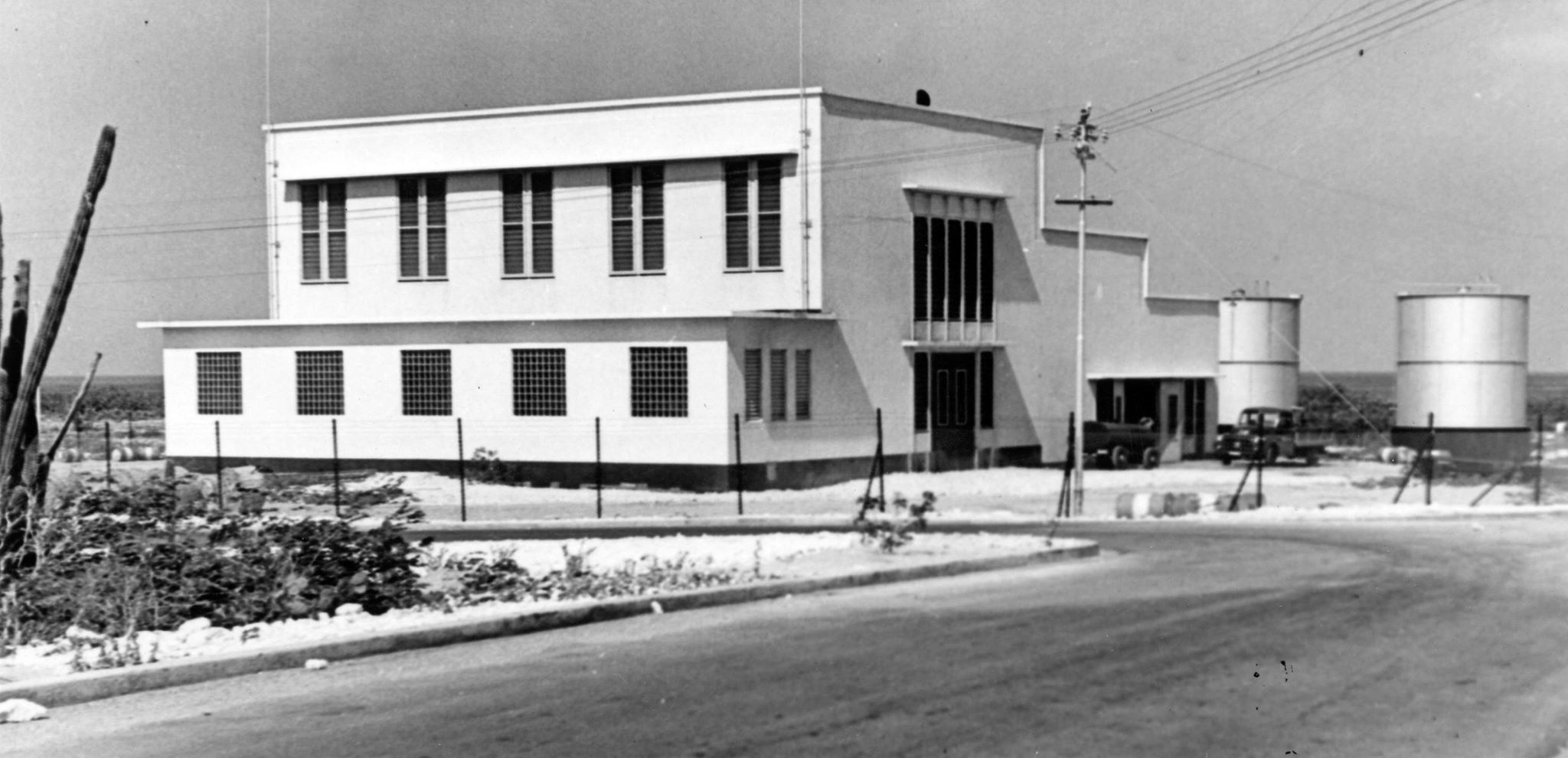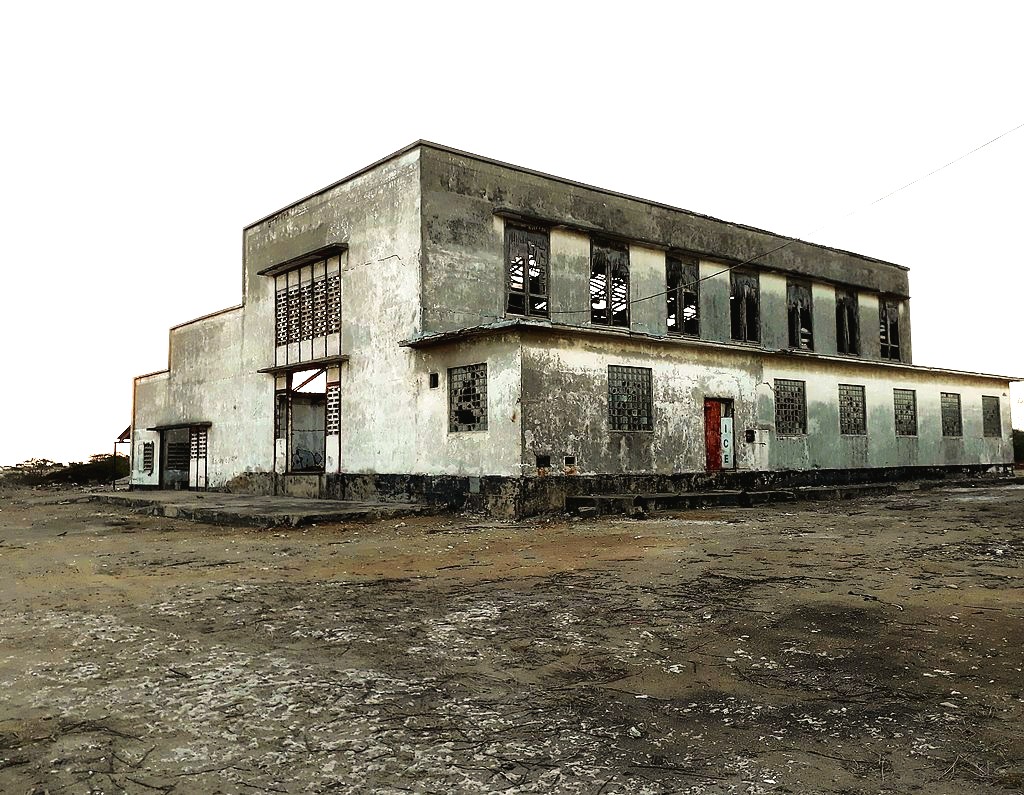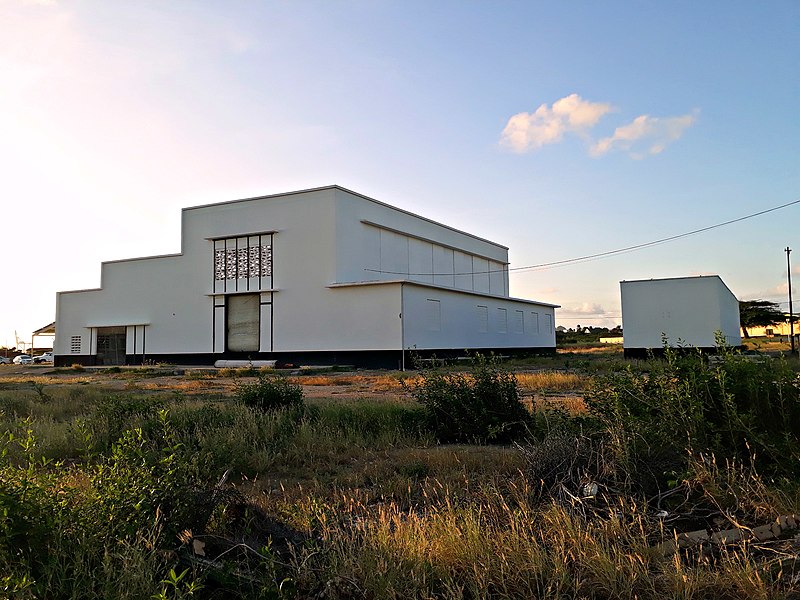Aruba’s first experience with lights and electricity started with the establishment of the Aruba Gold Company at Balashi. In 1924 a Dutch investor named Mr. A.J.P. van Meeteren acquired a concession to establish Aruba’s first power company. The power plant consisted of one engine which generated enough electricity for at least 50 light posts, 25 Watt each. In 1931 the company was sold to John G. Eman and together with his wife Mrs. F. Eman-van der Biest, they drove the company to success.
Eman named the company ELECTRA N.V. and managed to increase the plant’s capacity while expanding the company’s distribution area. The island’s demand grew consistently during the years and the distribution grid expanded considerably.
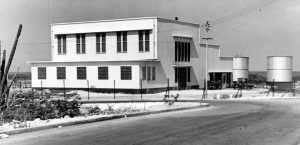
In November 1950, the island Government took ELECTRA N.V. over in order to best serve the island’s general interest. On November 11th, 1950, the ELECTRA concession was granted to the Dutch company OGEM N.V. (Overseas Gas and Electricity Company). Considering the plans and changes, ELECTRA changed its name to Naamloze Vennootschap ELectrische Maatschappij Aruba (N.V. ELMAR). On the 15th of November 1950, the production and distribution were officially transferred. N.V. Elmar had a capacity of 3000kW, which gradually increased throughout the years.
In 1958 the Island Government bought a new power station with bigger capacity (15000kW) which was intended for the yet to be established Water and Power Company, WEB Aruba N.V. This company would provide Aruba with drinking water. The Government together with N.V. Elmar agreed that N.V. Elmar will buy the majority of the generated power in order to provide distribution to the island.
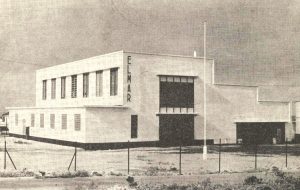
The first Electra substation for the production of electricity was opened in Pos Chiquito in 1950, at the southern tip of the Spanish Lagoon .
A couple of streets with houses for the employees were built next to it, one with the name of its first general manager, Ir. Luymesstraat. Tennis courts were there too.
When the Electra company moved to the other side of the Lagoon to join the water plant, the building was used to house the ARSTON Corp., a contractor mainly for LAGO. For most Arubians, the former Elmar building became known as the Arston building.
When the refinery closed down, so did Arston Corp. The building remained empty for decades and fell into decay. The roof sheets rusted away.
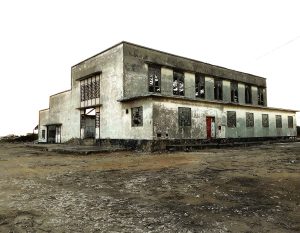
Some years ago, the building received a fresh layer of white paint and another contractor moved in.
